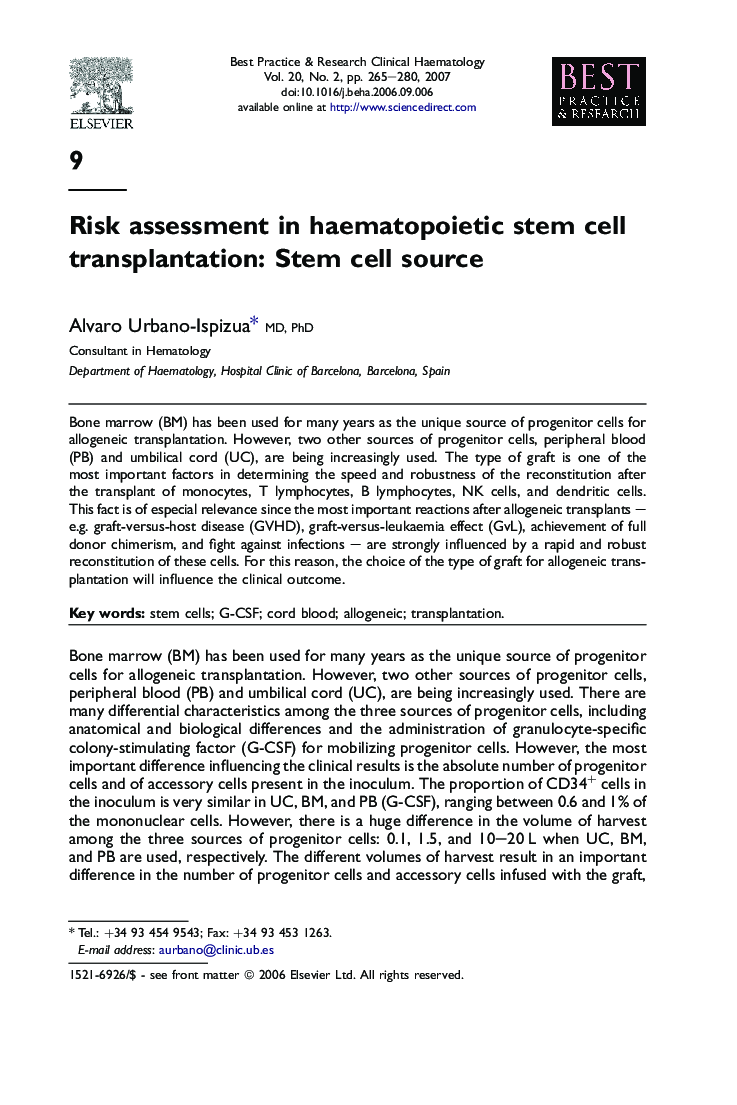| Article ID | Journal | Published Year | Pages | File Type |
|---|---|---|---|---|
| 2100567 | Best Practice & Research Clinical Haematology | 2007 | 16 Pages |
Bone marrow (BM) has been used for many years as the unique source of progenitor cells for allogeneic transplantation. However, two other sources of progenitor cells, peripheral blood (PB) and umbilical cord (UC), are being increasingly used. The type of graft is one of the most important factors in determining the speed and robustness of the reconstitution after the transplant of monocytes, T lymphocytes, B lymphocytes, NK cells, and dendritic cells. This fact is of especial relevance since the most important reactions after allogeneic transplants – e.g. graft-versus-host disease (GVHD), graft-versus-leukaemia effect (GvL), achievement of full donor chimerism, and fight against infections – are strongly influenced by a rapid and robust reconstitution of these cells. For this reason, the choice of the type of graft for allogeneic transplantation will influence the clinical outcome.
